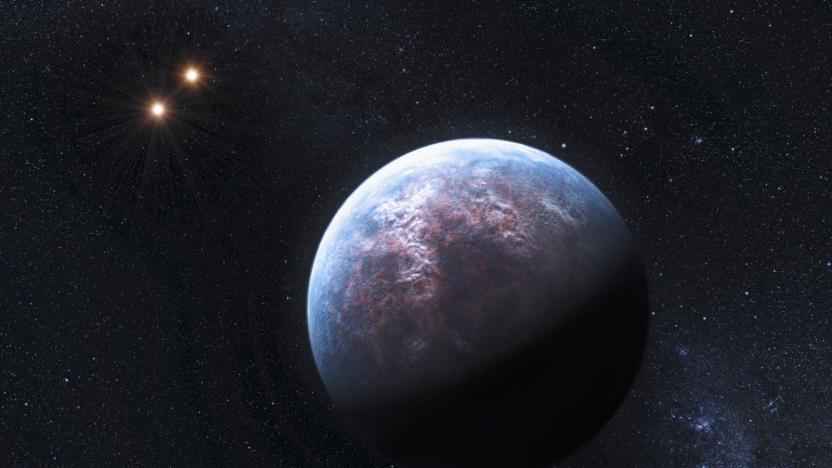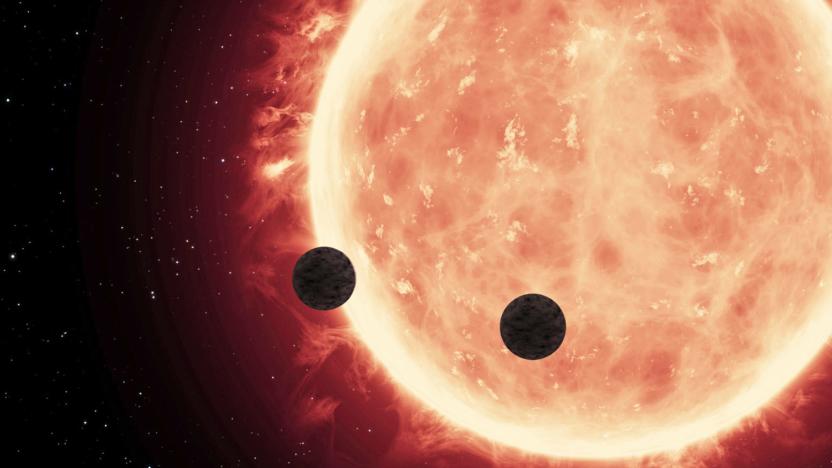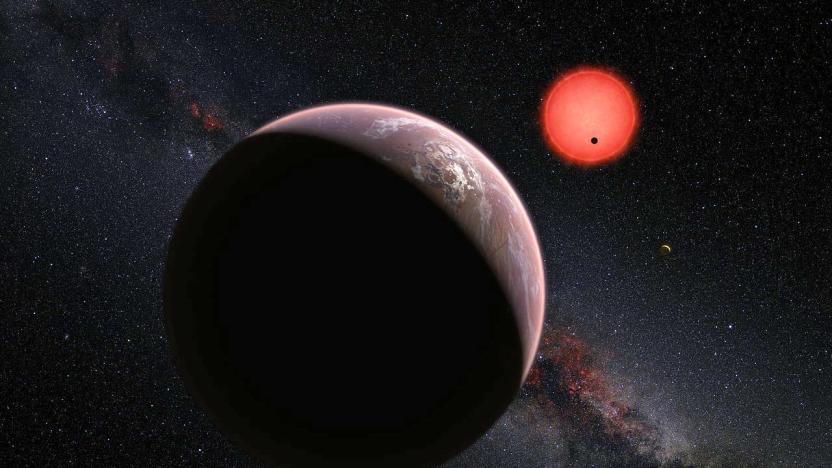trappist
Latest

It's unlikely that the TRAPPIST-1 planets support life
Earlier this year, NASA made headlines when they reported the discovery of seven Earth-sized planets just 40 light years away. Three of the TRAPPIST-1 planets are within the star's habitable zone. But now, it's looking unlikely that life will be found within the TRAPPIST system.

Hubble study finds two potentially habitable exoplanets
Scientists from MIT and the University of Liège studying a planetary system orbiting the star TRAPPIST–1 have discovered two rocky, Earth-like and potentially habitable planets only 40 light years away from home. According to a paper published in Nature today, the atmospheres on planets TRAPPIST–1b and TRAPPIST–1c are likely to be dense and compact like the atmospheres of Earth, Venus and Mars.

Three Earth-sized planets exist in the Aquarius constellation
It's the dawning of the age of Aquarius. Well, the discovery of three planets orbiting a cooler-than-the-Sun dwarf star located in the Aquarius constellation, according to NASA. A number of telescopes, including the TRAPPIST at the La Silla Observatory in Chile were used in this trio, and the star itself bears the name TRAPPIST-1 for pretty obvious reasons. The planets are Earth-like in size and two of them orbit the star roughly every 1.5 and 2.4 days. The third one has proven a bit harder to track, with NASA saying its orbit is anywhere between 4.5 to 73 days.

